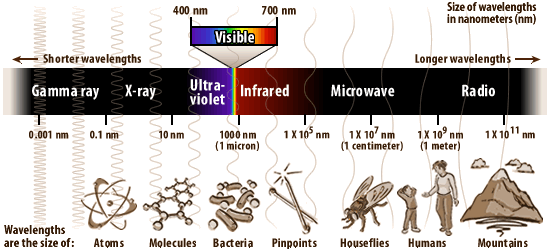The health risks of the 5G radiation are being debated. However, one study has suggested that there is a connection between radiofrequency radiation with cancer among male rats. The study was classified before it was removed on the 12th of December 2012 by the Central Intelligence Agency, but it has proven that radiofrequency may be a cause of cancer for animals and even humans. In the research, scientists exposed male rats to radiofrequency for 15 days , and found that they developed the same kinds of cancers that humans develop.
Health effects of radiation from 5G
Although the rapid growth of wireless communication is causing the development of 5G technology however, there is a growing concern about the health impacts of 5G radiation. While the higher frequencies may not penetrate the body as deeply as previous technologies, researchers have identified potential effects on the system and are calling for more research. To ensure that the population is protected to protect the population, the European Commission is requesting independent studies to determine if the technology poses any health risks.
It is important to note that there is a significant amount of misinformation regarding the health implications of 5G and it is vital to clear any misconceptions that persist. Although 5G isn't yet widely used however, there are many people who are being warned that it can cause health issues, most often via social networks, where hyperbolic use of language is commonplace.
Beamforming 5g radiation symptoms
Beamforming is one of the most vital technologies in five-G networks. It is a method that makes use of several radiating elements to produce narrow beams. The aim for beamforming is reduce how much unwanted radiation is reflected in the signal that results. This technique is commonly employed in wireless communication systems and is crucial for 5G's low-cost coverage.
The method involves electronically weighing the signals from each antenna. This produces an extremely smaller beam of radiation which improves cell coverage indoors and near the cell's edges. This is crucial as poor coverage can result in lower user satisfaction. Along with improving the signal beamforming reduces the amount of interference a user encounters from other devices.
5g radiation symptoms of 5G radiation coming from cell towers will be comparable to the previous generation of 3G and 4G systems. One reason behind the low power density lies in the electrical components' sensitivity. The highest radiation output of a 2G phone was approximate 2 Watts. The output of 4G phones was approximate 200 milliwatts.
The power density measures how much electromagnetic energy can be absorbed into the body from a specific distance. Its power density in radiation 5g is usually measured in the watts per square metres. In contrast to the SAR measurement, it is an actual measure of the quantity of electromagnetic energy within the space. The limits for power density are different for wearables and mobile devices according to their operating frequencies and distance.
Specific absorption
A Specific Absorption Rate (SAR) is a parameter that measures the rate at which a particular frequency depositions power in human tissues. In general, the SAR number is not more than two Watts per kilogram of body mass. The SAR value is calculated through the electrostatic field present in tissues as well as the mass density, which is measured as kilograms for each cubic meters. The method was recent used to determine the antenna design.
The latest radio technology which comprise 5G operate in frequencies that are less than 6 GHz. These frequencies are known in millimeter waves. However according to the FCC's SAR compliance program is only applicable to frequencies that are up to 6 GHz. Additionally to that, the SAR test requires that measurements be performed using phantoms that contain tissue simulating medium.
5g radiation on skin
We know very little about the health effects of radiation from 5G on the skin. The current knowledge is limited because of the absence of in-vivo experiments and theoretical models. However, there is an urgent need for further studies of the effects of 5G radiofrequency radiation on human skin. Using 5G radio frequencies can cause damage to the skin, especially to the epidermis, which is one of the most sensitive parts.

In contrast to 4G, 5G radiation has a high frequency which has been proven to increase the temperature of human body tissues. Human body is dipolar, so the increased frequency of radio waves from 5G could cause heat in the skin. The exposure to radio frequencies from 5G may also affect other organs in the body, such as the brain.
